Why Trust Our Scientific Editing Service?
Why Trust Our Scientific
Editing Service?
Ensure your research meets rigorous journal standards with our subject-specific and journal-focused scientific editing. Our expert editors refine your manuscript’s clarity, accuracy, and impact, giving you the confidence needed for successful submission to your target journal.
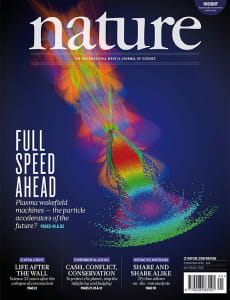
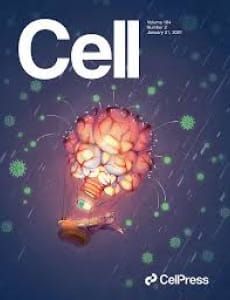
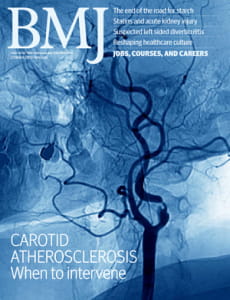
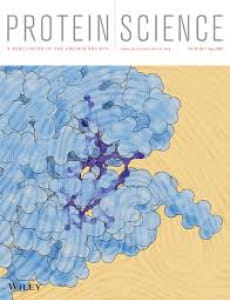
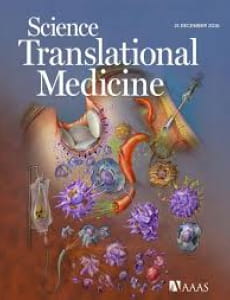
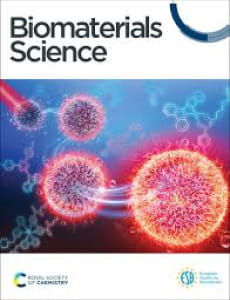
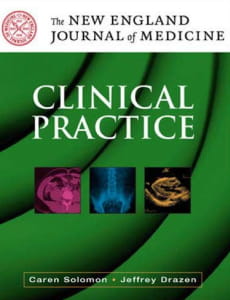
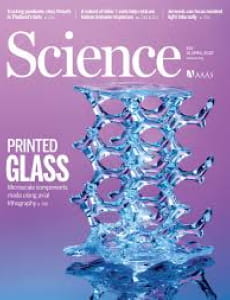
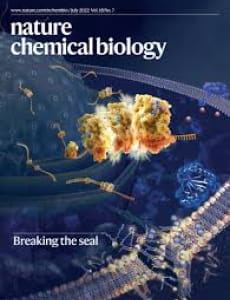
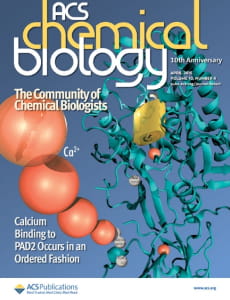
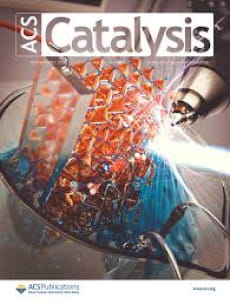
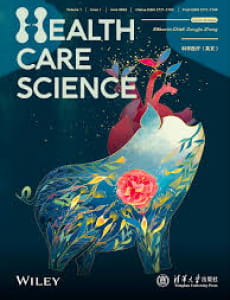
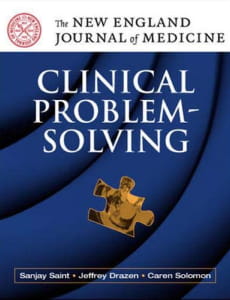
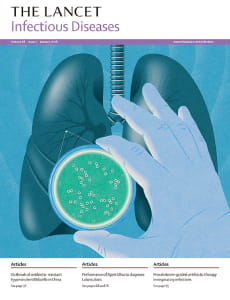
Get Published with Scribendi's Expert Scientific Editing Service Get Published with Scribendi's Expert Scientific Editing Service
Expert in Your Scientific Field
Gain insights and corrections from a professional deeply familiar with your area of research, ensuring your manuscript not only reads well but is also scientifically accurate.
Tailored Editing to Meet Specific Journal Guidelines
Ensure your manuscript's compliance with target publication standards, reducing the likelihood of rejection due to formatting errors.
Field-Specific Scientific Explanation and Logic Check
Enhance the clarity and robustness of your arguments with expert checks that ensure logical consistency and field-specific accuracy, boosting the scholarly impact of your manuscript.
Detailed Editing of References, Figures, and Tables
Improve the clarity and impact of your visual data and ensure that all text is correct, bolstering the professional quality of your research.
Editorial Advice for Improving Manuscript Quality
Receive strategic guidance on how to elevate your paper's narrative and structure, significantly increasing your chances of acceptance.
Extended Editing Support for Your Manuscript
Receive an additional round of editing to refine your manuscript and ensure it meets the highest publication standards, with continued support available at 50% off if requested within two weeks of completing your original order.
Featured Expert Editors
At Scribendi, our expert editors enhance the quality and impact of your scientific manuscripts. With advanced degrees and specialized knowledge, they are dedicated to helping you achieve your publication goals.



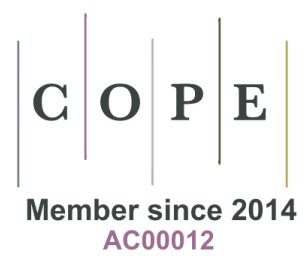
COPE (Committee on Publication Ethics) provides leadership and an unbiased expert voice in publication ethics, while offering education and support to all those involved in scholarly publishing.
What It Takes to be an
Expert Editor
Our expert editors are rigorously selected based on a comprehensive set of criteria, ensuring they possess the exceptional qualifications needed to maximize your publication success. Every expert editor meets these stringent requirements:
Top Journal Experience
Reviewer for prestigious journals
Editorial board member experience
Verifiable Publication Record
Published research in peer-reviewed journals
Native English Speaker
Ensures natural, fluent writing
Understands nuances of scientific communication
PhD or Equivalent
Advanced degree in their field
Content Review & Editing Sample
Explore How We Work with a Manuscript
Check out sample edits as well as editorial and scientific comments in this paper about peripheral nerve injury!
Why Academics Choose Us?



Solutions Built for Large-Scale
Projects' Success
Elevate your organization's success with our corporate solutions. They are specially designed for businesses and institutions and tailored for large-scale projects to ensure efficiency, scalability, and top-tier support. Let's drive your goals forward together.
Have questions? Check out our FAQ.
Scientific Editing
vs.
Academic Editing
| Academic Editing | Scientific Editing | |
|---|---|---|
| Editor for Your Work | Experienced Academic Editor | PhD Subject Expert + Language Expert |
| Key Areas of Focus | Grammar, Diction, Clarity, Style, Logic, and Readability | Academic Editing Areas + Content, Structure, Impact, and Journal Suitability |
| Scientific Accuracy | Reviewed for Logic, Clarity, and Valid Arguments | Ensured by an Experienced Researcher in Your Field |
| Journal Guidelines | Adherence to General Style Guides and Journal Guidelines | Complete Adherence to the Guidelines of SCIE Journals |
| Clarity & Coherence | Improved Readability for a Broad Academic Audience | Refined for Academic Impact and Alignment with Your Target Journal |
| Strategic Advice | Suggestions to Improve Clarity, Flow, Argumentation, and Continuity | In-Depth Commentary from Subject Experts on Content and Aims |
| Quality Assurance | One Academic Editor | Two Editors: Subject Expert + Language Expert |
| Second Review of Your Work | Occasional Discounts | 50% Guaranteed Discount |
| Tailored Recommendations | Based on Academic Best Practices | Detailed and Targeted Field-Specific Recommendations |
| Academic Editing | Scientific Editing |
|---|---|
| Editor for Your Work | |
| Experienced Academic Editor | PhD Subject Expert + Language Expert |
| Key Areas of Focus | |
| Grammar, Diction, Clarity, Style, Logic, and Readability | Academic Editing Areas + Content, Structure, Impact, and Journal Suitability |
| Scientific Accuracy | |
| Reviewed for Logic, Clarity, and Valid Arguments | Ensured by an Experienced Researcher in Your Field |
| Journal Guidelines | |
| Adherence to General Style Guides and Journal Guidelines | Complete Adherence to the Guidelines of SCIE Journals |
| Clarity & Coherence | |
| Improved Readability for a Broad Academic Audience | Refined for Academic Impact and Alignment with Your Target Journal |
| Strategic Advice | |
| Suggestions to Improve Clarity, Flow, Argumentation, and Continuity | In-Depth Commentary from Subject Experts on Content and Aims |
| Quality Assurance | |
| One Academic Editor | Two Editors: Subject Expert + Language Expert |
| Second Review of Your Work | |
| Occasional Discounts | 50% Guaranteed Discount |
| Tailored Recommendations | |
| Based on Academic Best Practices | Detailed and Targeted Field-Specific Recommendations |




Benefit from 50% off on a second round of editing for even greater manuscript refinement
Our continued support ensures your research is polished and ready for submission to top-tier journals
* 50% discount available within two weeks of the completion of original order.
Have questions? Check out our FAQ or Get in Touch
Scribendi Clients Have Been
Published in Top-Tier Journals




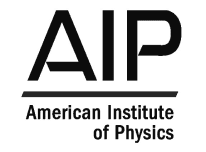

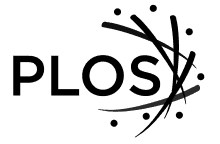




Frequently Asked Questions
If you have revised your manuscript after submitting it to a journal or after peer review, we can perform a second round of editing to make sure any new text you have added is submission-ready and consistent with the rest of your manuscript.
If you are instructed by the editor of your target journal or peer reviewers to make further revisions, you can send the revised manuscript to us for a second round of editing.
Our Scientific Editing service will improve the chances of your manuscript being accepted for publication. However, we cannot “edit” the research content of your manuscript: this is something for peer reviewers to comment on.
Therefore, while we cannot make any guarantees regarding the publication of your research, we can guarantee that we will get your manuscript into the best possible condition for submission to a journal for peer review.













An Analysis of Repair by a Nerve Connector as an Alternative for Direct Repair in Peripheral Nerve Injury
Introduction
Nerve injuries impose a heavy burden on patients' quality of life. Though direct epineurium and perineurium sutures are the classic techniques most commonly used for peripheral nerve injury, they are often accompanied with undesirable tension and their surgical outcomes are less than satisfactory.(1)(2)(3)(4) Such could be due to misalignments such as miss direction, overlapping and buckling of axons, ingrowth of scar tissue into the repair site and tension-induced ischemia around the stumps, all leading to poor fascicular coaptation.(5) To overcome these problems, several newer technologies such as connector repair have been considered.(6)
Previous studies have suggested that utilizing a nerve conduit as a connector for peripheral nerve repair, covering the repair site and leaving a very short gap between the stumps, provides outcomes that are equivalent to, or better than, direct suture repair.(7)(8)(9) It is generally considered that nerves regenerate along the length of the nerve conduit in a selective manner such that the proximal motor nerves migrate to join the distal motor nerves.(10)(11) The intentional gap in the connector is known to provide an area for selective reinnervation encouraging natural re-growth preventing the forementioned misalignments.
Connector also provides a physical barrier preventing infiltration of scar tissue in effect allowing diffusion of nutrients to the healing repair site.(12)(13) The barrier prevents the potential uncontrolled sprouting to the outside of the coaptation site(12) while the additional length relocates the sutures away from the coaptation site reducing the risk of tension and tension-induced ischemia around the stumps. The use of connectors also reduces the number of sutures required for the nerve coaptation, which potentially reduces surgical time.(6)(12)
While the employment of nerve conduit as a nerve connector has been known to achieve outcomes equivalent to, or better than direct suture repair, its underlying mechanism and how the axons behave in the conduit still remain unclear. The present study investigates the peripheral nerve repair mechanism inside an artificial nerve conduit through a short gap. Serial in-vivo imaging using transgenic mice which constitutively express YFP fluorescence and analysis of gene expressions at the repair site were conducted while varioius histomorphometric measurements were taken. The results were compared against the direct suture repair counter-part and the control. The final recovery was quantified through functional assessments.
Materials and Methods
Preparation of nerve conduit
Bioabsorbable PGA conduit filled with collagen in honeycomb-like structure (Nerbridge, Toyobo Co. Ltd. Fig. 1A) used in this study are commercially available and have been approved as a medical device for clinical practice by the Japanese Government since 2013. This artificial nerve was selected for this study for its robustness. The tube was made of PGA fiber mesh, permeable for particles smaller than 600 KD, with the inner diameter of 1 mm and the length of 55 ± 5 mm, designed to biodegrade 3 months after transplantation in vivo.(14) For the present study, only the outer cylinder without the inner honeycomb shaped collagen was used(14) after soaking in saline for 5 minutes.(15)
Experimental Animals
In this study, 64 transgenic mice (Thy1-yellow fluorescent protein (YFP) 16, available from The Jackson Laboratory, strain B6. Cg-Tg (Thy1-YFP) 16 Jrs/J) with all axon fibers of motor and sensory nerves constitutively expressing YFP fluorescence were employed (8-12 weeks old, weighing 23-28 g, 32 males and 32 females, Fig. 1B, C and D). The animal husbandry was conducted in accordance to standards and regulations provided by the National Institutes of Health Guide for Care and Use of Laboratory Animals. The study was approved by the Animal Care Committee of Juntendo University. Mice were kept in groups of four in a sterile cage maintained at 22℃ ± 2℃ and 40-60% humidity under a 12-hour light/dark cycle. The mice had free access to water and 15-kGy gamma-irradiated feed (CRF-1, Oriental Yeast Co.). Animals were sacrificed by cervical dislocation under deep anesthesia after the grafts were harvested.
Experimental model
The experimental group (n = 48) underwent a nerve transection procedure to create an injury to both sciatic nerves which were later followed by two types of repair operations, direct epineurium suture (right hind limb) and artificial nerve connector (left hind limb). The control group (n = 16) underwent the same procedure without the nerve transection or the repair operation. Equal number of female and male mice were assigned to each group.
-Creation of sciatic nerve injury model
Experimental group were anesthetized. A 15 mm skin incision was made parallel to the femur on the both hind limbs to expose the sciatic nerves. For manipulation of the sciatic nerve, a microscope was used (MZ16FA, Leica Microsystems). Once the nerve was detached from the surrounding tissues, it was transected at the halfway between the hip and knee joint (Fig. 1E, F and G). Femoral muscle was partially peeled and placed between the nerve stumps to avoid natural reconnection and the wound was closed using 5-0 nylon. The animals were left for 2 weeks for the formation of Wallerian degeneration in the distal stump before the repair operations were conducted.
-Repair operations
The experimental group underwent the repair operation two weeks after the initial operation. Under anesthesia, the wound was reopened and the sciatic nerve stumps were exposed under the microscope (Fig. 1H and I). The formation of Wallerian degeneration was confirmed through the disappearance of YFP fluorescence expression in the distal stump (Fig. 1J and K). The end of both stumps were debrided to the minimum extent in order to remove the neuromas and two types of nerve repair were performed to each hind limb.
Epineurium suture – direct repair (DR): To every right hindlimb, a direct epineurium suture was conducted with two stitches of 9-0 nylon (Fig. 2A, B and C).
Nerve repair using nerve connector - connector repair (CR): Every left hindlimb was repaired using a 3 mm artificial nerve. The artificial nerve was interposed with a stitch of 9-0 nylon on either end. Approximately 1 mm of the nerve-ends were inserted into the conduit leaving a distance of 1 mm between the stumps inside the conduit (Fig. 2A, D and E).
Quantitative RT-PCR
To analyze the gene expressions at the repair site, in the case of DR, tissues between 1 mm proximal and 1 mm distal from the suture, and in the case of CR, all tissues inside the conduit, were harvested and examined by qRT-PCR at 3 days, 1 week and 2 weeks after the repair operation (n = 24). Expressions of a macrophage migration marker (CD68), an angiogenesis marker (vascular endothelial growth factor (VEGF)), an endothelial maker (CD31(PECAM-1)), Schwan cell migration markers (SOX10, S100) and neurotrophins (neurotrophin-3 (NT-3), brain-derived neurotrophic factor (BDNF) and nerve growth factor (NGF)) were analyzed. The tissues were extracted and stored in RNAlater solution at −4°C overnight, and then at −80°C until RNA extraction. Total RNA was extracted with RNeasy Plus Universal Mini kit (QIAGEN), and purity and concentration were assessed using a NanoPhotometer (IMPLEN). RNA samples with a 260 nm/280 nm ratio between 1.8 and 2.0 were used for qRT-PCR. We used a high-capacity RNA-to-cDNA kit (Applied Biosystems) for reverse transcription into cDNA and TaqMan Fast Advanced Master Mix (Applied Biosystems) for qRT-PCR. All primers were purchased from Applied Biosystems, and measured values were compared with GAPDH as a reference gene. The thermocycling conditions were 95°C for 20 seconds, followed by 45 cycles of 95°C for 3 seconds and 62°C for 30 seconds, on an ABI 7500 FAST PCR system (Applied Biosystems). The amount of each target gene relative to the GAPDH reference gene was determined using the comparative threshold cycle method, and the mean values were calculated.
Repair using a nerve connector as an alternative for direct repair in peripheral nerve injury
Introduction
Nerve injuries can impose a heavy burden on patients' quality of life. Although direct epineurial and perineurial sutures are commonly used for peripheral nerve injury, they are often accompanied by undesirable tension and their surgical outcomes can be less than satisfactory.1-4 These sutures can cause axon misalignments (such as misdirection, overlapping, and buckling), scar tissue ingrowth into the repair site, or tension-induced ischemia around the stumps, all of which can lead to poor fascicular coaptation.5 To overcome these problems, several newer methods, such as connector repair, have been considered.6
Previous studies have suggested that using a nerve conduit as a connector (covering the repair site and leaving a very short gap between the stumps) for peripheral nerve repair provides outcomes that are equivalent to, or better than, those of direct suture repair.7-9 Nerves generally regenerate along the length of the nerve conduit in a selective manner, with proximal motor nerves migrating to join distal motor nerves.10,11 The intentional gap in the connector provides an area for this selective reinnervation, thus encouraging natural regrowth while preventing misalignments.
The connector also provides a physical barrier to prevent the infiltration of scar tissue, allowing the diffusion of nutrients to the repair site.12,13 This barrier prevents any potential uncontrolled sprouting outside the coaptation site,12 and its length relocates the sutures away from the coaptation site, thus reducing the risk of tension and tension-induced ischemia around the stumps. The use of a connector also decreases the number of sutures required for nerve coaptation, which may reduce surgical time.6,12
The use of a nerve conduit as a connector has reportedly achieved outcomes equivalent to, or better than, those produced by direct suture repair; however, the underlying mechanisms of the conduit and the response of the axons in it remain unclear. In the present study, we investigate the peripheral nerve repair mechanisms of an artificial nerve conduit across a short gap. To do this, we performed serial in vivo imaging of transgenic mice that constitutively express yellow fluorescent protein (YFP), analyzed gene expression at the repair site, and recorded various histomorphometric measurements. We compared all conduit repair findings against their direct suture repair counterparts and against the control. Final recovery was quantified through functional assessments.
Methods
Preparation of nerve conduit
For the present study, we used a bioabsorbable polyglycolic acid (PGA) conduit filled with collagen in a honeycomb-like structure (Nerbridge, Toyobo Co. Ltd.; Fig. 1A); this product is commercially available and has been approved by the Japanese government as a medical device for clinical practice since 2013. We selected this artificial nerve for its robustness. The tube was made of PGA fiber mesh that was permeable to particles smaller than 600 KD. It had an inner diameter of 1 mm and a length of 55 ± 5 mm, and was designed to biodegrade 3 months after transplantation in vivo.14 For this study, only the outer cylinder without the inner honeycomb-shaped collagen was used,14 after being soaked in saline for 5 min.15
Experimental animals
We purchased 64 transgenic mice (Thy1 YFP 16) from the Jackson Laboratory (strain: B6.Cg-Tg[Thy1-YFP]16Jrs/J; 8–12 weeks old, weighing 23–28 g, 32 males and 32 females; Fig. 1B–D). In these mice, all axon fibers of the motor and sensory nerves constitutively express YFP fluorescence. Animal husbandry was conducted in accordance with the standards and regulations provided by the National Institutes of Health Guide for Care and Use of Laboratory Animals. The study was approved by the Animal Care Committee of Juntendo University. The mice were kept in groups of four in sterile cages that were maintained at 22℃ ± 2℃ and 40–60% humidity under a 12-hour light/dark cycle, and they had free access to water and 15 kGy gamma-irradiated feed (CRF-1, Oriental Yeast Co.). They were sacrificed by cervical dislocation under deep anesthesia after all grafts had been harvested.
Experimental model
The experimental group (n = 48) underwent a nerve transection procedure on the sciatic nerve of each hind limb. Two weeks later, this was followed by two types of repair operations: direct epineurial suture (right hind limb) and artificial nerve connector (left hind limb). The control group (n = 16) underwent the same procedures but without the nerve transection or the repair operation. Equal numbers of male and female mice were assigned to each group.
Sciatic nerve injury model creation
The mice in the experimental group were anesthetized. On each hind limb, a 15 mm skin incision was made parallel to the femur to expose the sciatic nerve. To manipulate the sciatic nerve, a microscope (MZ16FA, Leica Microsystems) was used. Once the nerve was detached from the surrounding tissue, it was transected halfway between the hip and knee joint (Fig. 1E–G). The femoral muscle was partially peeled and placed between the nerve stumps to avoid natural reconnection, and the wound was closed using 5-0 nylon. The animals were then left for 2 weeks (to allow the formation of Wallerian degeneration in the distal stump) before the repair operations were performed.
Repair operations
The experimental group underwent the repair operations 2 weeks after the initial lesion-generating operation. Each mouse was placed under anesthesia, then its wounds were reopened, and the sciatic nerve stumps were exposed under a microscope (Fig. 1H and I). The Wallerian degeneration was confirmed by the disappearance of YFP expression in the distal stump (Fig. 1J and K). The ends of both stumps were debrided to the minimum extent to remove neuromas, and the two types of nerve repair (one to each hind limb) were performed as follows.
Epineurial suture – Direct repair (DR)
The right hind limb of each each experimental mouse was repaired using a direct epineurial suture, which was conducted with two 9-0 nylon stitches (Fig. 2A– C).
Nerve repair using nerve connector – Connector repair (CR)
The left hind limb of each experimental mouse was repaired using a 3 mm artificial nerve. The artificial nerve was interposed with a stitch of 9-0 nylon on each end. Approximately 1 mm of each nerve end was inserted into the conduit, leaving 1 mm between the stumps inside the conduit (Fig. 2A, D, and E).
Quantitative reverse transcription polymerase chain reaction (qRT-PCR)
To analyze gene expression at the repair site, tissue between 1 mm proximal and 1 mm distal from the suture (in the case of DR) or all tissue inside the conduit (in the case of CR) was harvested and subjected to qRT-PCR at 3 days, 1 week, and 2 weeks after the repair operation (n = 24). The expression levels of a macrophage migration marker (CD68), an angiogenesis marker (vascular endothelial growth factor [VEGF]), an endothelial marker (platelet endothelial cell adhesion molecule [PECAM1], also known as CD31), Schwan cell migration markers (SOX10 and S100), and neurotrophins (neurotrophin-3 [NTF-3], brain-derived neurotrophic factor [BDNF], and nerve growth factor [NGF]) were analyzed. The tissue was extracted and stored in RNAlater solution at −4°C overnight and then stored at −80°C until RNA extraction. Total RNA was extracted using an RNeasy Plus Universal Mini Kit (QIAGEN), and RNA purity and concentration were assessed using a NanoPhotometer (IMPLEN). RNA samples with a 260 nm/280 nm ratio between 1.8 and 2.0 were used for qRT-PCR. We used a high-capacity RNA-to-cDNA kit (Applied Biosystems) for reverse transcription into cDNA and TaqMan Fast Advanced Master Mix (Applied Biosystems) for qRT-PCR. All primers were purchased from Applied Biosystems, and the measured values were compared using GAPDH as a reference gene. An ABI 7500 FAST PCR system (Applied Biosystems) was used for thermocycling, and the conditions were 95°C for 20 s, followed by 45 cycles of 95°C for 3 s and 62°C for 30 s. The amount of each target gene relative to the GAPDH reference gene was determined using the comparative threshold cycle method, and the mean values were calculated.
An Analysis of Repair by using a nNerve cConnector as an aAlternative for dDirect rRepair in pPeripheral nNerve iInjury
Introduction
Nerve injuries can impose a heavy burden on patients' quality of life. AltThough direct epineurialum and perineurialum sutures are the classic techniques most commonly used for peripheral nerve injury, they are often accompanied with by undesirable tension and their surgical outcomes are can be less than satisfactory.(1-)(2)(3)(4) Such could be due toThese sutures can cause axon misalignments (such as miss direction, overlapping, and buckling) of axons , ingrowth of scar tissue ingrowth into the repair site, and or tension-induced ischemia around the stumps, all of which can leading to poor fascicular coaptation.(5) To overcome these problems, several newer technologies methods, such as connector repair, have been considered.(6)
Previous studies have suggested that utilizing using a nerve conduit as a connector (covering the repair site and leaving a very short gap between the stumps) for peripheral nerve repair, covering the repair site and leaving a very short gap between the stumps, provides outcomes that are equivalent to, or better than, those of direct suture repair.(7-)(8)(9) It isNerves generally considered that nerves regenerate along the length of the nerve conduit in a selective manner, such that thewith proximal motor nerves migratinge to join the distal motor nerves.(10,)(11) The intentional gap in the connector is known to provides an area for this selective reinnervation, thus encouraging natural re-growth while preventing the aforementioned misalignments.
The cConnector also provides a physical barrier to preventing the infiltration of scar tissue, in effect allowing the diffusion of nutrients to the healing repair site.(12,)(13) Thise barrier prevents the any potential uncontrolled sprouting to the outside of the coaptation site,(12) while and itsthe additional length relocates the sutures away from the coaptation site, thus reducing the risk of tension and tension-induced ischemia around the stumps. The use of a connectors
also reduces
decreases
the number of sutures required for
the
nerve coaptation, which
potentially
may
reduces
surgical time.(6,)(12)
While the employmentThe use of a nerve conduit as a nerve connector has been known to reportedly achieved outcomes equivalent to, or better than, those produced by direct suture repair; ,however, its the underlying mechanisms of the conduit and how the response of thethe axons behave in the conduitit still remain unclear. In tThe present study, we investigates the peripheral nerve repair mechanisms inside of an artificial nerve conduit through across a short gap. To do this, we performed Sserial in vivo imaging using of transgenic mice which that constitutively express yellow fluorescent protein (YFP), fluorescence and analyzedsis of gene expressions at the repair, were conducted while and recorded various histomorphometric were taken. The results wereWe compared all conduit repair findings against their direct suture repair counter-parts and against the control. FThe final recovery was quantified through functional assessments.
Materials and Methods
Preparation of nerve conduit
For the present study, we used a bBioabsorbable polyglycolic acid (PGA) conduit filled with collagen in a honeycomb-like structure (Nerbridge, Toyobo Co. Ltd.; Fig. 1A);used in this study are
this product is
commercially available and
hasve
been approved
by the Japanese government
as a medical device for clinical practice
by the Japanese Government
since 2013.
We selected Tthis artificial nerve
was selected for this study
for its robustness. The tube was made of PGA fiber mesh,
that was
permeable
for
to
particles smaller than 600
KD., with theIt had an
inner diameter of 1 mm and
the
a
length of 55 ± 5 mm,
and was
designed to biodegrade 3 months after transplantation in vivo.(14)
For the presentthis
study,
only the outer cylinder without the inner honeycomb--shaped collagen was used,(14)
after
being
soakeding
in saline for 5 minutes.(15)
Experimental Aanimals
In this study, We purchased 64 transgenic mice (Thy1 -yellow fluorescent protein ( YFP) 16), available from tThe Jackson Laboratory, ( strain : B6.Cg-Tg[Thy1-YFP]16Jrs/J; 8–12 weeks old, weighing 23–28 g, 32 males and 32 females; Fig. 1B–DB6. Cg-Tg (Thy1-YFP) 16 Jrs/J) . In these mice, with all axon fibers of the motor and sensory nerves constitutively express ing YFP fluorescence. were employed (8-12 weeks old, weighing 23-28 g, 32 males and 32 females, Fig. 1B, C and D). The aAnimal husbandry was conducted in accordance to with the standards and regulations provided by the National Institutes of Health Guide for Care and Use of Laboratory Animals. The study was approved by the Animal Care Committee of Juntendo University. The mMice were kept in groups of four in a sterile cages that were maintained at 22℃ ± 2℃ and 40-60% humidity under a 12-hour light/dark cycle. The mice, and they had free access to water and 15- kGy gamma-irradiated feed (CRF-1, Oriental Yeast Co.). Animals They were sacrificed by cervical dislocation under deep anesthesia after the all grafts were had been harvested.
Experimental model
The experimental group (n = 48) underwent a nerve transection procedure to create an injury toon both the sciatic nerve of each hind limbs. which were laterTwo weeks later, this was followed by two types of repair operations:, direct epineurialum suture (right hind limb) and artificial nerve connector (left hind -limb). The control group (n = 16) underwent the same procedures but without the nerve transection or the repair operation. Equal numbers of male and female and male mice were assigned to each group.
-Creation of Ssciatic nerve injury model creation
The mice in the eExperimental group were anesthetized. On each hind limb, Aa 15 mm skin incision was made parallel to the femur on the both hind limbs to expose the sciatic nerves. For To manipulateion of the sciatic nerve, a microscope was used (MZ16FA, Leica Microsystems) was used. Once the nerve was detached from the surrounding tissues, it was transected at the halfway between the hip and knee joint (Fig. 1E–, F and G). The Ffemoral muscle was partially peeled and placed between the nerve stumps to avoid natural reconnection, and the wound was closed using 5-0 nylon. The animals were then left for 2 weeks for (to allow the formation of Wallerian degeneration in the distal stump) before the repair operations were conducted performed.
-Repair operations
The experimental group underwent the repair operations two 2 weeks after the initial lesion-generating operation. Each mouse was placed Uunder anesthesia, the then its wounds wereas reopened, and the sciatic nerve stumps were exposed under the a microscope (Fig. 1H and I). The formation of Wallerian degeneration was confirmed through by the disappearance of YFP fluorescence expression in the distal stump (Fig. 1J and K). The ends of both stumps were debrided to the minimum extent in order to remove the neuromas, and the two types of nerve repair (one to each hind limb) were performed to each hind limbas follows.
Epineurialum suture –- Dddirect repair (DR):
The right hind limb of each each experimental mouseTo every right hindlimb was repaired using, a direct epineurialum suture, which was conducted with two stitches of 9-0 nylon stitches (Fig. 2A –, B and C).
Nerve repair using nerve connector –- Cconnector repair (CR):
Every left hindlimbThe left hind limb of each experimental mouse was repaired using a 3 mm artificial nerve. The artificial nerve was interposed with a stitch of 9-0 nylon on either each end. Approximately 1 mm of the each nerve -ends were was inserted into the conduit, leaving a distance of 1 mm between the stumps inside the conduit (Fig. 2A, D, and E).
Quantitative reverse transcription polymerase chain reaction (qRT-PCR)
To analyze the gene expressions at the repair site, in the case of DR, tissues between 1 mm proximal and 1 mm distal from the suture (in the case of DR), and in the case of CR, or all tissues inside the conduit (in the case of CR), wasere harvested and examined by subjected to qRT-PCR at 3 days, 1 week, and 2 weeks after the repair operation (n = 24). The eExpressions levels of a macrophage migration marker (CD68), an angiogenesis marker (vascular endothelial growth factor ([VEGF)]), an endothelial marker (platelet endothelial cell adhesion molecule CD31[(PECAM-1)], also known as CD31), Schwan cell migration markers (SOX10, and S100), and neurotrophins (neurotrophin-3 [(NTF-3)] , brain-derived neurotrophic factor [(BDNF)], and nerve growth factor [(NGF)]) were analyzed. The tissues were was extracted and stored in RNAlater solution at −-4°C overnight, and then stored at −-80°C until RNA extraction. Total RNA was extracted with using an RNeasy Plus Universal Mini Kkit (QIAGEN), and RNA purity and concentration were assessed using a NanoPhotometer (IMPLEN). RNA samples with a 260 nm/280 nm ratio between 1.8 and 2.0 were used for qRT-PCR. We used a high-capacity RNA-to-cDNA kit (Applied Biosystems) for reverse transcription into cDNA and TaqMan Fast Advanced Master Mix (Applied Biosystems) for qRT-PCR. All primers were purchased from Applied Biosystems, and the measured values were compared with using GAPDH as a reference gene. An ABI 7500 FAST PCR system (Applied Biosystems) was used for The thermocycling, and the conditions were 95°C for 20 seconds , followed by 45 cycles of 95°C for 3 seconds and 62°C for 30 seconds, on an ABI 7500 FAST PCR system (Applied Biosystems). The amount of each target gene relative to the GAPDH reference gene was determined using the comparative threshold cycle method, and the mean values were calculated.